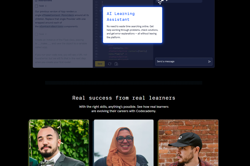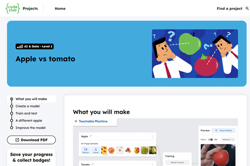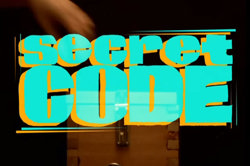Elements of AI
A long, self-paced course taking the form of textual and graphical content followed by exercises. Covers numerous AI concepts and applications. Free, but registration required.
Additional details
| Year band(s) | 5-6, 7-8, 9-10 |
|---|---|
| Content type | Course or tutorial |
| Format | Web page |
| Core and overarching concepts | Computational thinking, Digital systems |
| Australian Curriculum Digital Technologies code(s) |
AC9TDI6P02
Design algorithms involving multiple alternatives (branching) and iteration
AC9TDI8P05
Design algorithms involving nested control structures and represent them using flowcharts and pseudocode
AC9TDI8P06
Trace algorithms to predict output for a given input and to identify errors
AC9TDI8P09
Implement, modify and debug programs involving control structures and functions in a general-purpose programming language
AC9TDI10P10
Evaluate existing and student solutions against the design criteria, user stories, possible future impact and opportunities for enterprise |
| Technologies & Programming Languages | Artificial Intelligence |
| Keywords | Artificial, Intelligence, Artificial Intelligence, AI, Experiments, Machine learning, Drawing, Pattern recognition, Neural networks, Algorithm, Data, Natural Language Processing, weak AI, Deep learning |
| Organisation | University of Helsinki and Reaktor |
| Copyright | © University of Helsinki and Reaktor. May be subject to statutory licence fee. |
Related resources
-

Codecademy
This site provides tutorials on web design tools. Requires free registration.
-

Taking a tour
In this unit, students will use prior research on a geographic location to design and code an interactive quiz game in Scratch. They will plan visuals, narration, and clickable elements to share facts, then build a game using sequences, conditionals, and events — with optional scoring using variables — that teaches and tests knowledge about their chosen place.
-

Smart communities
In this unit, students will incorporate loops, conditional statements, user inputs, and sensing blocks to program simulations of responsive systems such as traffic lights and streetlights. They will then consider a problem in their community and prototype a potential solution.
-

Weather watchers
In this unit, students are introduced to programming and data in Scratch. They will explore how programs are a set of instructions that computers follow to complete a task. Later in the unit, students will compare different types of weather data and modify a program to include variables.
-

Apple vs tomato
Train a machine learning model to detect if you are holding an apple or a tomato. Then, improve the classifier by using more diverse training data.
-

Khan Academy: Journey into cryptography
This tutorial provides a detailed treatment of cryptographic methods with comprehensive explanations of their operation.
-

Khan Academy: Journey into information theory
Mainly video based lesson sequence on general Information Theory.
-

Google CS First: Game design
CS First: Game design guides students to use block-based coding in Scratch projects through a series of themed activities.
